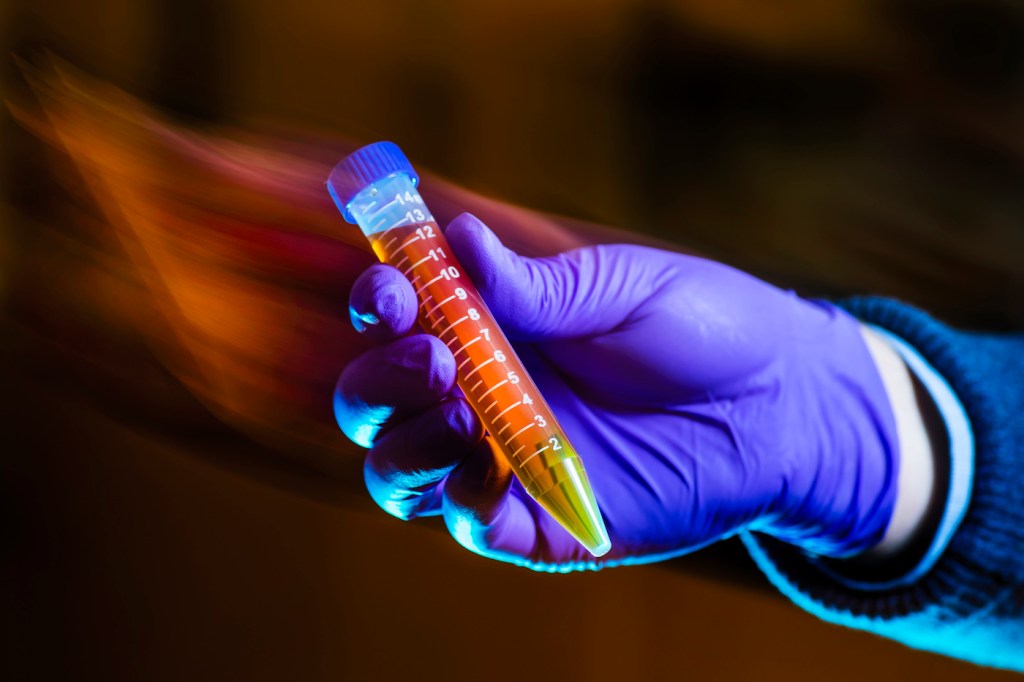How Big Data and the science of science can revolutionize discovery

The field of science is like a giant piece of machinery with many moving parts. Over its long history, we’ve watched how the machine performs. Pieces fit together in new ways, enabling new skills and capabilities. A wrong turn leads to an entirely new path forward.
The machine’s every move has been recorded in the form of scholarly papers, scientific discoveries, and career accolades for the groundbreaking scientists. Isn’t it time all that data was put to good use?
That’s the basic premise of the emerging field known as the science of science. In a paper published Thursday in the journal Science, Northeastern network scientists Albert-László Barabási and Alessandro Vespignani collaborated with other colleagues to review and analyze literature published in the past five to 10 years on the science of science.
“We’re in the Big Data era,” said Barabási, Robert Gray Dodge Professor of Network Science and Distinguished Professor of Physics, who directs the Center for Complex Network Research. Using data to understand how the greater scientific community functions, he said, will help individual scientists do their jobs better.
Vespignani, Sternberg Family Distinguished University Professor and director of the Network Science Institute, said the field of the science of science has the potential to help predict the success of researchers, teams, and entire disciplines.
Here, the researchers explain how scientists, organizations, and greater society can benefit from the science of science.
What is the science of science, and why is it important to study?
Vespignani: We live in a world where we want more and more predictive power. When you think about the current capabilities of business analytics and forecasting, it seems a little odd that we are not able to know what scientific field we should invest money in, and in what area of science we should push the pedal to move it to the next level. For a long time, there has been difficulty because of the lack of digital data. Now, that is changing. We are in the Big Data revolution—we have these huge databases of authors, articles, discovery patterns, affiliations, citations. This is what the community is trying to leverage to create a science of science.
How can universities leverage the science of science?
Vespignani: When you are a football team owner or coach, you want the best people—not just in general, but in terms of working as a team player for specific roles. You want to know each player’s strengths and weaknesses. For a university, research center, or any agency, it’s very important to understand how people collaborate and have specific roles in teams. It’s also important to be able to anticipate the productivity of a scientist. One of the best things that could be done with insight from the science of science is that we could assemble the best team. The best team isn’t made by the best scientist—it’s the best scientists that can work together.
In the paper, you included a section of lessons learned from studying the science of science that would be relevant to individual scientists. One of them focuses on how credit is assigned in research. Can you explain this in more detail?
Barabasi: There is a tricky proposition in the 21st century where the highest impact work now comes out of collaborative papers where there are two or more co-authors. The question is: if a major discovery is made, who will be credited for it when you have two or even 100 authors of a paper, and how is that decision being made?
One of the key discoveries here is that the way the paper is attributed has nothing to do with who actually did most of the work on the paper. It’s not related to who made the discovery and who had the insights, but rather, the community collectively assigns credit to the author who has the most consistent track record in the area of that particular discovery. The main takeaway message is that it’s not enough to make a discovery on your own. You need to build up the credit for that, and to build up the credit means you need to make multiple discoveries— independent of the other co-authors on the paper—on the same topic so the community will look at you as being the source of that discovery.
How does understanding the science of science benefit not only the scientific community, but society as a whole?
Vespignani: When you look at the production and consumption of science, it can be formalized as a kind of economy. And I think we are just scratching the surface of understanding the economy of knowledge and science. How can we provide momentum to this mechanism so that we can accelerate science?
For example, Boston is a major science producer. There is a market here of importing and exporting science. What are the patterns and the networks that characterize the flow of scientific ideas, innovation, and knowledge? Then behind this science economy, there is the real economy. There are investments, the support of universities, the support of governments. You can imagine how interesting it would be for federal agencies to understand where to invest properly, or how to detect—in advance—the promising areas. It’s important not just as a cultural exercise, but it also has implications on our lives and how we accelerate the development of society.





